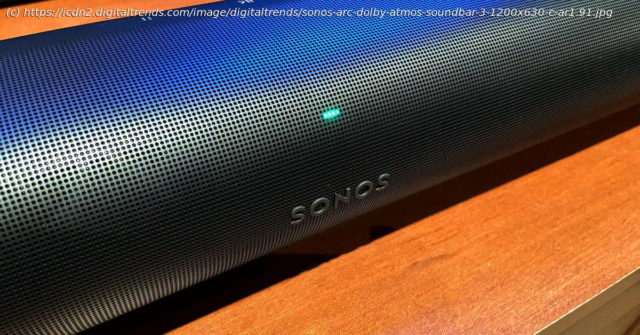The $799 Arc is Sonos’ first Dolby Atmos-capable soundbar, fulfilling years of customer requests. Now that it’s here, does it deliver? Here’s our full review.
When Sonos debuted its first soundbar, the $699 Playbar in 2013, it received well-deserved praise. As a dead-simple, but somewhat pricey, way to give your TV a massive audio upgrade, it succeeded on just about all but one front: The decision on Sonos’ part to equip the Playbar with a single optical input meant the Playbar would forever be locked out of the expanding world of surround formats like Dolby Digital Plus, Dolby TrueHD, and Dolby Atmos — something reviewers noted at the time as a drawback to an otherwise superb product.
Seven years later, Sonos has returned to the full-size home theater soundbar arena with the $799 Arc, a Dolby Atmos-capable speaker that shows off everything the company has learned since the Playbar’s debut. Did Sonos push the envelope far enough this time, or has it simply played catch-up? Let’s take a look.
I’ve said before that when it comes to soundbars, the best designs draw no attention to themselves at all. After all, your visual focus should be on your TV, not your soundbar.
But that said, not negatively drawing your eye doesn’t mean your soundbar should be a boring slab of plastic either. In classic Sonos fashion, the Arc manages to exude a subtle elegance when it’s not acting as your TV’s partner and then disappears almost entirely when it’s time to dim the lights and start the show.
I credit this chameleon-like performance to our review unit’s matte black finish. It worked for me — though, for the first time, Sonos also has a full-size soundbar you can also buy in matte white. Whether your primary aesthetic is low-key Darth Vader or low-key Stormtrooper, there’s a Sonos Arc to suit your tastes.
The design of the single-piece wrap-around speaker grille comprised of hundreds of tiny holes gives the Arc the same understated monolithic look as the company’s other recent products, such as the Move, Sonos One, One SL, and the updated Sonos Five.
Sonos has placed the Arc’s touch controls on the top of the soundbar, which feels like a more logical position than the Playbar’s more awkward side controls. However, this placement means that sliding the Arc fully underneath your TV will make these controls difficult or impossible to get to. That might not matter though as, with all Sonos products, you can control the speaker entirely from your phone, tablet, or computer.
Just like with the Playbar, you can sit the Arc in front of your TV, where you’ll need at least 2.5 inches of clearance if you want it to sit directly under the screen. It can also be wall-mounted, but be prepared for some sticker shock: The optional steel bracket is a whopping $80 — a full 10% of the price of the Arc itself.
Sonos prides itself on its commitment to simplicity and the Arc embodies that fully with its extremely easy set-up: A single HDMI ARC/eARC port on the rear of the speaker is all you need to connect it to your TV. Just plug one end of the included HDMI cable into that port, plug the other end into your TV’s HDMI ARC/eARC port, plug the power cable in, and you’re essentially good to go.
The rest of the setup process happens in the Sonos app. It only takes a few minutes and includes Sonos’ Trueplay tuning feature. Trueplay is how Sonos gains an understanding of your room’s acoustics. It can then optimize the Arc’s EQ for better music and presumably, better Dolby Atmos. Trouble is, TruePlay is an iOS-only feature which requires the microphone on an iPhone, iPod Touch, or iPad. Android users are out of luck.
Sonos points out that you can always borrow an iOS device to TruePlay your system, but that seems like cold comfort for those who have chosen to stay out of Apple’s well-manicured walled garden.
Ironically, in Sonos’ desire to keep things simple, it has created a degree of inconvenience too. HDMI ARC/eARC is a terrific concept because it lets you send digital audio and video to your TV while simultaneously letting your TV send digital audio back to your soundbar or A/V receiver. But the Sonos Arc hogs that connection for itself, turning it into an audio-out port only.
That’s because the Arc, unlike almost every modern soundbar on the market, doesn’t have an HDMI input. All of your source devices, such as game consoles, cable boxes, streaming media devices, or Blu-ray players must connect directly to one of your TV’s other HDMI inputs, which creates three potential problems.
First, unless your source device is a stick-style gadget like a Fire TV Stick, you will need to run one HDMI cable per device to your TV — in addition to the HDMI cable the Arc requires. Depending on your home theater installation, that could be tricky.
Second, few TVs ship with more than four HDMI inputs.






